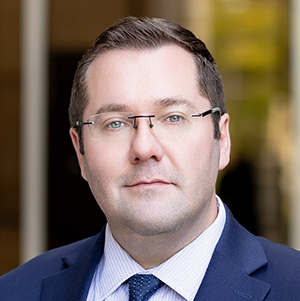Three themes shaping asset allocation in H2 2023
From a regional bank crisis to default fears, the first five months of 2023 has been anything but quiet. As we head into the second half of the year, we take a look at key themes that could affect risk markets and investment returns.

A very busy six months
The first half of 2023 may have felt challenging, but it’s fair to say that the global economy and financial markets have shown to be more resilient than expected. Generally speaking, stocks and the fixed-income market have delivered positive returns year to date.1
While breadth of the positive performance in the stock market isn’t as broad as we would have liked—for instance, small caps and parts of the emerging-market universe didn’t do too well—technology stocks managed to carve out some respectable gains after a horrible 2022.
On the fixed-income side of the equation, we’ve seen positive returns in government-backed and credit securities. Those returns may seem modest, but they do represent a sharp improvement from what we saw in 2022.
Looking ahead, we find ourselves focusing on three key themes from an asset allocation perspective.
1 Dial down the focus on inflation, worry more about growth
The battle against inflation isn’t over, but it’s time to cast our gaze further afield and focus on growth—specifically, the effect that sticky inflation and cumulative rate hikes can have on growth. The lagged effects of central bank monetary tightening are finally becoming more observable, and it’s becoming clear that they’re starting to bite into growth dynamics. While the economy has been fairly resilient, we think it isn’t enough to avert a recession in parts of the world.
That said, it must be noted that we’re less worried about how deep the expected recession could be than we are about how long it will last. It’s possible that we could be stuck in a slow-growth environment for a prolonged period—a scenario that isn’t reflected in current pricing of market securities.
Asset class overview
Broad equity
Regional/sector-specific equity
Fixed income
2 Certainty about rising uncertainty
Investors should get used to heightened uncertainty because it’s unlikely to go anywhere anytime soon. In addition to ongoing uncertainty around central bank policy, markets will also need to constantly adjust to the ever-evolving global geopolitical backdrop. Crucially, markets seem to have a fairly rosy view of corporate earnings, which seems somewhat optimistic—in our view—relative to what fundamentals suggest. In such an environment, we believe it makes sense to focus on higher-quality assets and adopt a more defensive positioning.
3 An improvement in long-term return prospects
Our analysis indicates that the longer-term return prospects for equities and fixed-income assets look healthy once we’ve returned to a growth environment, which is particularly true for fixed-income assets.
On the back of the sizable reset in interest rates across the globe, the return prospects for fixed-income instruments now look much better over a 5- to 10-year forecast horizon relative to where they were just two years ago. As active managers, we’ve been able to identify interesting opportunities within the fixed-income complex.
Broadly speaking, stock valuations have fallen from their recent peak; however, the repricing that equities went through wasn’t as severe as their fixed-income peers. Relatively speaking, while there are opportunities to be found within the equities space, we find fixed income more attractive at this juncture. Investors can expect fixed-income instruments to continue to provide a return in a low-growth environment; the same can’t be said of equities, as a protracted period of anemic growth typically translates into headwinds for this asset class.
“Crucially, markets seem to have a fairly rosy view of corporate earnings, which seems somewhat optimistic—in our view—relative to what fundamentals suggest.”
Looking beyond short-term challenges
In a time in which instant gratification has become the default setting, it can be difficult to battle short-termism; investing, however, requires us all to discard the instinct to assess everything through the prism of now—it’s a longer-term commitment. Things should improve once we get past the imminent low-growth environment and likely recession. For the next 6 to 12 months, adopting a more defensive posture with a keen focus on quality could make the most sense, particularly within the context of rising uncertainty.
1 As of 6/13/2023.
Model inputs are factors in Manulife Investment Management research and are not meant as predictions for any particular asset class, mutual fund, or investment vehicle. To initiate the investment process, the multi-asset solutions team formulates five-year, forward-looking risk and return expectations, developed through a variety of quantitative modeling techniques and complemented with qualitative and fundamental insight; assumptions are then adjusted for economic cycles and growth trend rates. The charts shown here may contain projections or other forward-looking statements regarding future events, targets, management discipline, or other expectations, and are only as current as of the date indicated. There is no assurance that such events will occur, and if they were to occur, the result may be significantly different from that shown here.
The information in this material, including statements concerning financial market trends, are based on current market conditions, which will fluctuate and may be superseded by subsequent market events or for other reasons.
This material should not be viewed as a current or past recommendation or a solicitation of an offer to buy or sell any investment products or to adopt any investment strategy. It is not possible to invest directly in an index. Past performance does not guarantee future results.
Important disclosures
Important disclosures
Investing involves risks, including the potential loss of principal. Financial markets are volatile and can fluctuate significantly in response to company, industry, political, regulatory, market, or economic developments. The information provided does not take into account the suitability, investment objectives, financial situation, or particular needs of any specific person.
All overviews and commentary are intended to be general in nature and for current interest. While helpful, these overviews are no substitute for professional tax, investment, or legal advice. Clients and prospects should seek professional advice for their particular situation. Neither Manulife Investment Management, nor any of our affiliates or representatives (collectively Manulife Investment Management) are providing tax, investment, or legal advice.
This material is intended for the exclusive use of recipients in jurisdictions who are allowed to receive the material under their applicable law. The opinions expressed are those of the author(s) and are subject to change without notice. Our investment teams may hold different views and make different investment decisions. These opinions may not necessarily reflect the views of Manulife Investment Management. The information and/or analysis contained in this material has been compiled or arrived at from sources believed to be reliable, but Manulife Investment Management does not make any representation as to their accuracy, correctness, usefulness, or completeness and does not accept liability for any loss arising from the use of the information and/or analysis contained. The information in this material may contain projections or other forward-looking statements regarding future events, targets, management discipline, or other expectations, and is only current as of the date indicated. The information in this document, including statements concerning financial market trends, are based on current market conditions, which will fluctuate and may be superseded by subsequent market events or for other reasons. Manulife Investment Management disclaims any responsibility to update such information.
Manulife Investment Management shall not assume any liability or responsibility for any direct or indirect loss or damage or any other consequence of any person acting or not acting in reliance on the information contained here. This material was prepared solely for informational purposes, does not constitute a recommendation, professional advice, an offer or an invitation by or on behalf of Manulife Investment Management to any person to buy or sell any security or adopt any investment approach, and is no indication of trading intent in any fund or account managed by Manulife Investment Management. No investment strategy or risk management technique can guarantee returns or eliminate risk in any market environment. Diversification or asset allocation does not guarantee a profit or protect against the risk of loss in any market. Unless otherwise specified, all data is sourced from Manulife Investment Management. Past performance does not guarantee future results.
This material has not been reviewed by, and is not registered with, any securities or other regulatory authority, and may, where appropriate, be distributed by Manulife Investment Management and our subsidiaries and affiliates, which includes the John Hancock Investment Management brand.
Manulife, Manulife Investment Management, Stylized M Design, and Manulife Investment Management & Stylized M Design are trademarks of The Manufacturers Life Insurance Company and are used by it, and by its affiliates under license.
2976146







